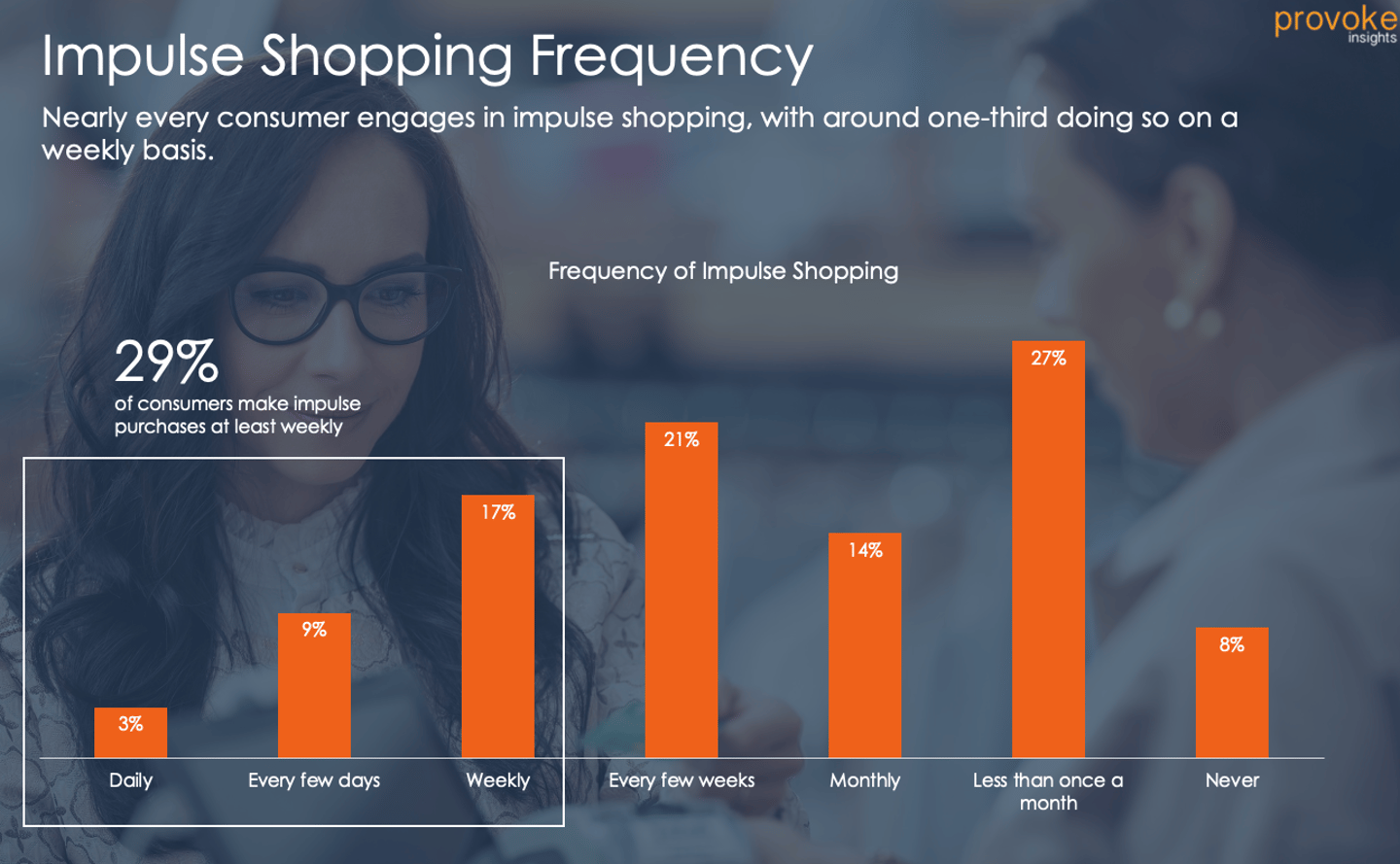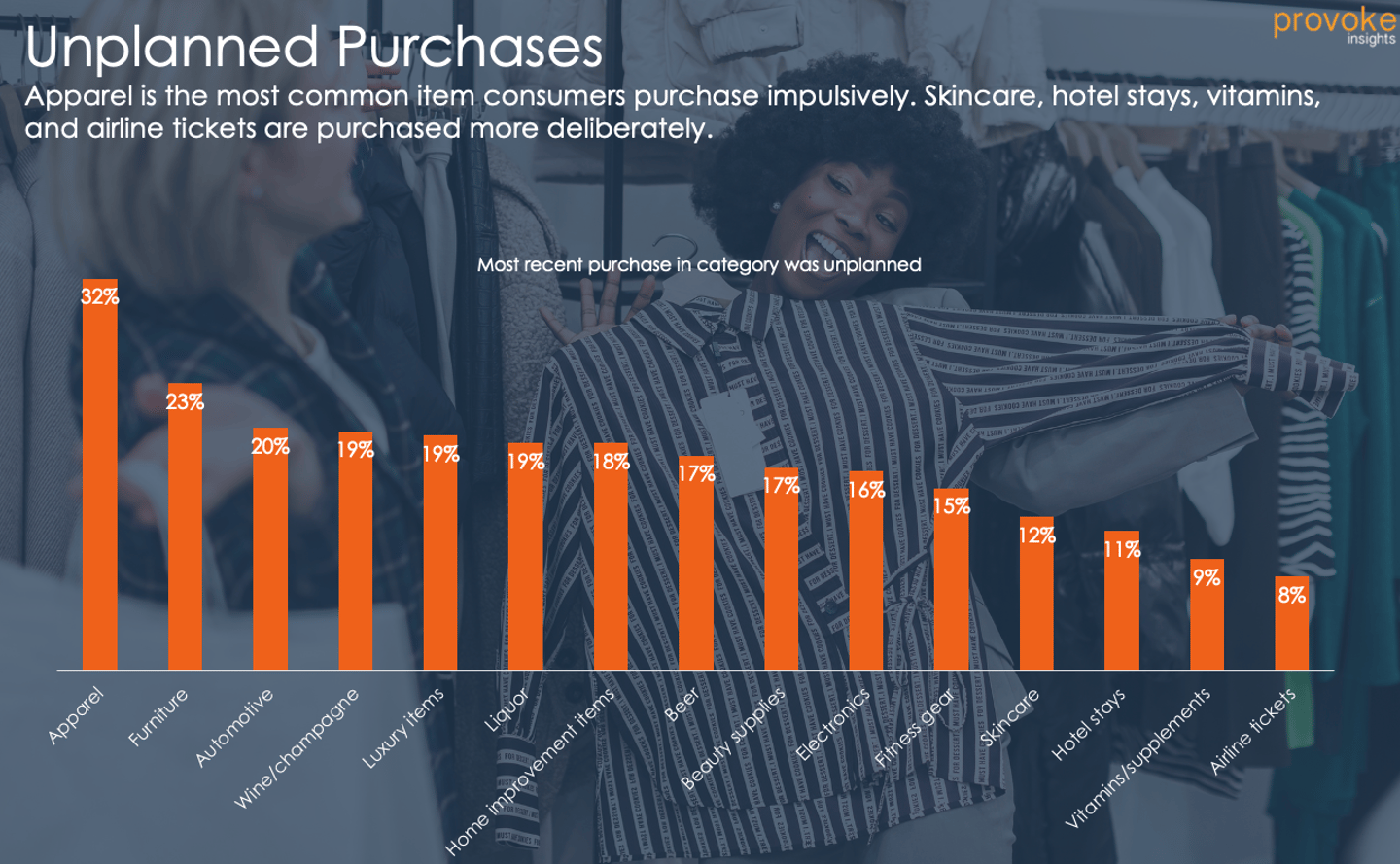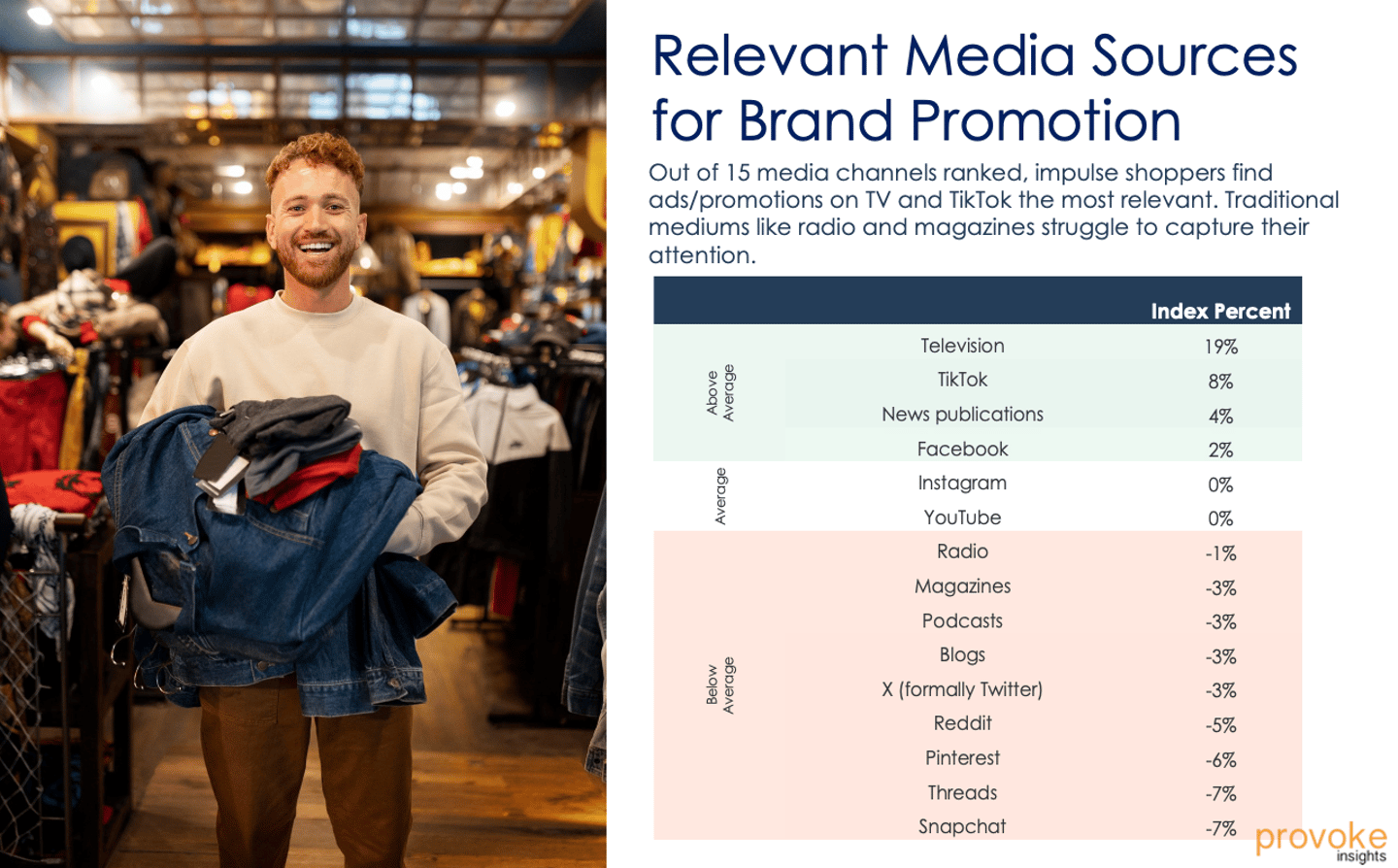The Impulse Buying Trend: Spontaneous Consumer Behavior Insights
In today's consumer landscape, impulse buying has become a prevalent phenomenon. It's no secret that many shoppers give in to spur-of-the-moment purchases, but have you ever wondered what makes impulse buying so compelling to consumers? Provoke Insights, a market research firm and brand consultancy, assessed the allure of impulse buying in the U.S. in its biannual trends study.
The Impulse Shopper
Did you know that impulse shopping is a common behavior among Americans, with 92% admitting to indulging in this activity at some point in their lives? In fact, almost a third of consumers (29%) frequently give in to the temptation of impulse purchases, splurging at least once a week. Certain demographic groups display an even higher propensity for this spontaneous shopping behavior.
Impulsively buying is more prevalent among certain groups — Gen Z consumers (44%), urban residents (39%), and parents (35%). Interestingly, frequent impulse shopping does not necessarily indicate financial security. More than two-fifths of those living paycheck to paycheck or in debt still choose to impulse buy weekly.
For many, the joy and excitement of shopping in-store holds a particular draw, as they relish the experience of browsing through aisles and being immersed in the latest products on the market (62%). The desire to stay ahead of evolving trends often drives these spontaneous purchases, leading consumers to make on-the-spot decisions (29%). Additionally, impulse shopping has a positive impact — individuals who engage in such purchases tend to hold a more optimistic outlook on the future compared to the typical shopper (40% vs. 27%).
Categories Most Susceptible to Impulse Shopping
Delving deeper into the types of products driving these spur-of-the-moment purchases, it's clear that certain categories hold particular appeal for impulse buyers. Apparel emerges as the primary category for such impulse buys (32%). However, there are notable generational differences in preferences, with younger shoppers leaning towards impromptu alcohol purchases while older age groups often splurge on unplanned apparel and luxury items.
Consumers are more thoughtful and deliberate about purchasing certain categories, such as skincare, hotel stays, vitamins and airline tickets. This shift may be attributed to the growing emphasis on wellness and preventive healthcare and the desire for more curated and personalized travel experiences. As consumer preferences and behaviors continue to evolve, businesses in the travel and wellness industries may need to adjust their marketing strategies to better cater to their target audience's changing needs.
Best Practices for Reaching Impulse Shoppers
Different media channels have varying levels of influence on impulse buyers. TV and TikTok ads and promotions have the greatest impact on impulse buyers, while other traditional media outlets, such as radio and magazines, struggle to capture their attention. As television remains a dominant force, commercials on streaming and cable remain a key way to target these individuals. Partnering with influencers with a strong presence on TikTok can also be highly effective. By collaborating with influencers to showcase products authentically and engagingly, businesses can capture impulse buyers' attention and drive conversions.
Businesses should pay closer attention to the phenomenon of impulse shopping and how these behaviors can impact their brand's marketing strategies. Media decisions and messaging may need to be tailored accordingly depending on the degree of impulse purchasing in a particular category.
Here are some additional strategies that marketers can consider:
- Create Compelling In-Store Experiences: Marketers can create "Impulse Moments" by focusing on in-store marketing. This can be achieved through innovative store layouts, interactive displays, and engaging product demonstrations that capture the attention of customers.
- Interactive and Immersive Online Shopping Experiences: For e-commerce sites, it is vital to create interactive and immersive shopping experiences that offer a similar browsing experience to that of physical stores. This can be achieved through tactics such as virtual try-on tools for apparel items, 360-degree product views, and interactive quizzes that help customers discover new products that they might not have considered otherwise.
- Highlight Urgency: Incorporating elements of urgency into marketing messages can be highly effective in driving impulse purchases. Highlighting popular products or limited-time offers can create a sense of need, prompting consumers to make impulsive buying decisions to avoid FOMO (the fear of missing out).
- Harness the Power of Influencer Marketing: Given the significant impact of platforms like TikTok on impulse buying behavior, partnering with influencers with a strong presence on these channels can be highly effective. These influencers can showcase products in an authentic and engaging way to capture impulse buyers' attention and drive conversions.
By incorporating these strategies into their marketing efforts, businesses can effectively capitalize on the insights into impulse buying behavior and drive increased sales and conversions from this lucrative segment of consumers.
About the Authors:
Carly Fink is president and head of research and strategy at Provoke Insights, and Melissa Conforto is manager of research and strategy at Provoke Insights.
Provoke Insights is a full-service global market research and brand strategy firm. As a builder of brands, the firm solely focuses on research for branding, advertising and content marketing initiatives. Provoke Insights empowers brands with the insights they need to navigate the cluttered marketing space and improve ROI.
Methodology. Provoke Insights conducted a 15-minute online survey among 1,500 Americans, aged 21-65, in April 2024. A random stratified sample and weighting methodology was used to ensure a high degree of representation of the U.S. population (household income, age, gender, geography, ethnicity and parental status).








